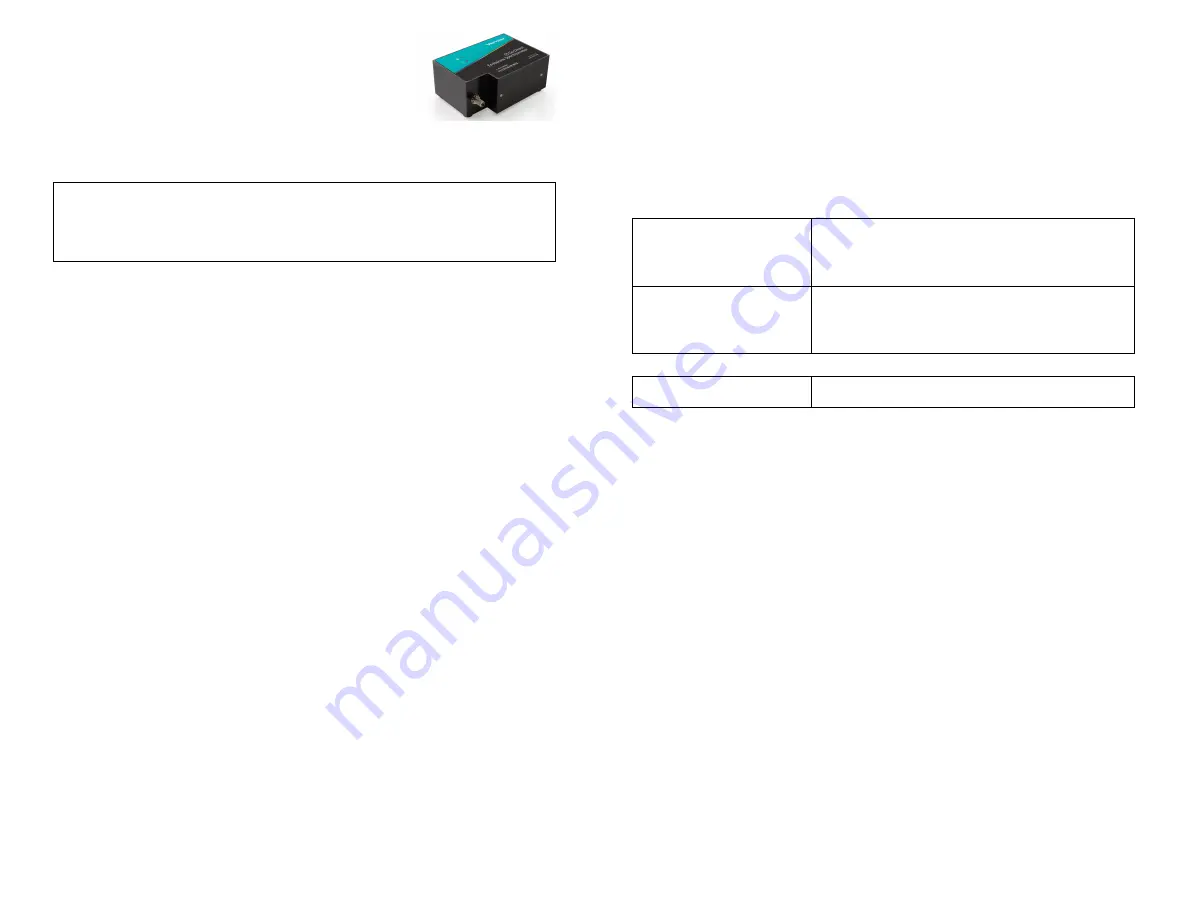
1
blue (no longer flashing).
5. Click or tap Done to enter data-
collection mode. You are now ready
to continue your experiment.
Connecting the Spectrometer
See the following link for up-to-date connection information:
www.vernier.com/start/gdx-spec-em
Connecting via Bluetooth
Ready to connect
Connect the USB to the USB power adapter or to
a powered USB hub. Blue LED next to Bluetooth
icon flashes when sensor is ready to connect.
Connected
Blue LED next to Bluetooth icon is solid when
sensor is connected via Bluetooth wireless tech-
nology.
Connecting via USB
Connected
LED next to USB icon is solid green.
Using the Spectrometer with Spectral Analysis
You may use your spectrometer to measure the emission spectrum of a light
source such as an LED or a gas discharge tube. To do so, you may wish to
purchase an optical fiber assembly (www.vernier.com/vsp-em-fiber) though this is
not required.
Connect the sensor following the steps in the Getting Started section of this user
manual.
Measure Intensity of Light Emissions
Connect the Optical Fiber to the spectrometer (optional). Intensity is reported in
relative units with a range of 0–1.
Note:
The spectrometer is not calibrated for
measuring absolute intensity.
1. Launch Spectral Analysis.
2. Connect the spectrometer following the steps in the Getting Started section of
this user manual.
3. Select the appropriate Emissions experiment from the listed options and follow
the prompts in the app. Intensity is a relative measure with a range of 0–1.
Note:
The Spectrometer is not calibrated for measuring intensity.
4. Aim the tip of the optical fiber at a light source. Start data collection. Click or
tap the Stop button to end data collection.
If the spectrum maxes out (flat and wide peaks at a value of 1), increase the
distance between the light source and the tip of the optical fiber cable or reduce
the integration time (see the Change the Settings in Spectral Analysis section).
Go Direct
®
Emissions
Spectrometer
(Order Code GDX-SPEC-EM)
The Go Direct Emissions Spectrometer is a portable
spectrometer designed to measure emissions from a wide variety of light sources.
Note:
Vernier products are designed for educational use. Our products are not
designed nor are they recommended for any industrial, medical, or commercial
process such as life support, patient diagnosis, control of a manufacturing
process, or industrial testing of any kind.
What's Included
l
Go Direct Emissions Spectrometer
l
Mini USB cable
l
USB Power Adapter
Compatible Software and Interfaces
See
www.vernier.com/manuals/gdx-spec-em
for a list of interfaces and software
compatible with the Go Direct Emissions Spectrometer.
Getting Started
Please see the following link for platform-specific connection information:
www.vernier.com/start/gdx-spec-em
Bluetooth Connection
USB Connection
1. Install Vernier Spectral Analysis
®
on
your computer, Chromebook™, or
mobile device. See
www.vernier.com/spectral-analysis
for Spectral Analysis availability.
2. To power the Bluetooth radio,
connect the spectrometer to the USB
Power Adapter or to a powered USB
hub. The Bluetooth
®
LED will blink.
Note:
Do not plug the USB into a
computer USB port to run with
Bluetooth wireless technology.
3. Launch Spectral Analysis.
4. Click or tap Connect a Spectrometer.
Select your Go Direct Emissions
Spectrometer from the list of
Discovered Wireless Devices. Your
spectrometer's ID is located near the
barcode on the label. The Bluetooth
LED on the sensor will now glow
1. Connect the spectrometer to the
USB port.
2. Launch the software. Options
include
l
Computer: Spectral Analysis or
Logger
Pro
3
l
Chromebook: Spectral Analysis
l
LabQuest: LabQuest App
l
Mobile Device: Spectral Analysis
3. The software will identify the
spectrometer and enter data-
collection mode. You are now
ready to continue your experiment.




